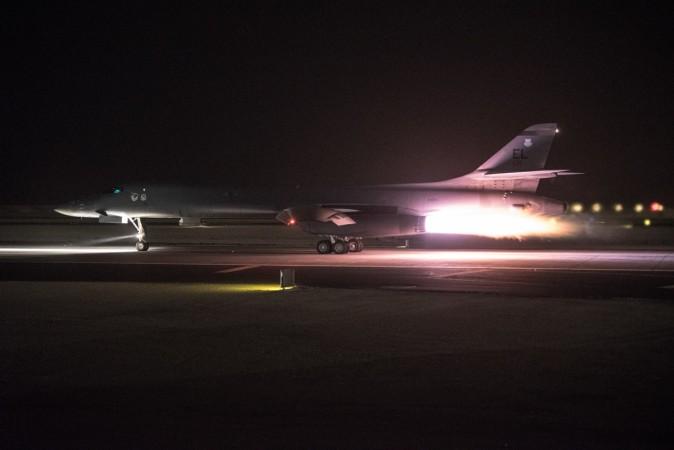
The Pentagon deployed its new Joint Air-to-Surface Standoff Missile-Extended Range (JASSM-ER) for the first time ever in combat during the Syrian airstrike April 13-14.
Known as one of the most advanced non-nuclear air-launched weapons currently with the US, this missile is designed to hit targets on land, but modifications are being made to enable it to reach targets at sea as well, notes Popular Mechanics (PM).
The JASSM-ER was fired at Barzah Research and Development Center, a spot that allegedly develops chemical weapons for the Syrian government. Each of the 57 missiles launched at the site had high explosive warheads that weighed about 500 kg. The report mentions that all 57 missiles reached their targets successfully, causing considerable damage to the Syrian government factories that allegedly produce chemical weapons. The US and its allies had been accusing Syrian president Bashar al-Assad's regime of using chemical weapons on civilians in areas controlled by the rebels. Of the 57 missiles that targeted the sites, 19 of them were JASSM-ERs, the reports said.
Though the US military intervention in Syria had started in 2014, the JASSM-ER had not been deployed until last weekend, notes the report. One of the reasons as to why it was not used in the region, in spite of conducting regular airstrikes over Libya, Somalia, Afghanistan, and Iraq, is because these sites did not have any sort of missile defense systems that would deter older missiles, the report explained. There was simply no need for the sophisticated JASSM-ER to be used in battle till now.
However, conflicting reports emerged out of Russia after the airstrikes. Syria successfully intercepted 71 out of 103 cruise missiles fired by the US and its allies, according to Tass, a Russian news agency. "According to available information, a total of 103 cruise missiles were fired... The Syrian air defense systems basically comprising Soviet-made weapons successfully repelled the strikes by aircraft and naval ships. A total of 71 missiles were intercepted," General Sergei Rudskoi said Saturday.
According to Tass, the airstrikes by the US were repelled by the S-125, S-200, Buk, Kvadrat and Osa air defense systems.
The JASSM-ER is a cruise missile born out of a US Navy and Air Force joint partnership to develop a missile that can penetrate through heavily protected enemy positions and destroy high-value targets. Called a "day one" missile, it is built to be used on the first day of combat, long before the enemy's defense systems are taken down, notes PM. It has the ability to find missile defenses and fly around them, making use of its stealthy airframe and low-altitude ground-skimming flight.
For this airstrike, the US Air Force (USAF) made use of just two B-1 Lancers. A Lancer can carry up to 24 JASSM-ER missiles, loaded on to rotary launchers, and dropped from its bomb bay. Apart from the B-1, the B-2, B-52H, F-15E, and F-16 can carry and launch the missile from the air, notes the report. The "ER" version of the JASSM has a range of 500 miles and this includes long, loopy flights, through mountains, avoiding missile defenses.
The missile is sophisticated and expensive, so it is unlikely to be used very often. So if they are called up for service, it indicates that the target is highly valuable and that something bad has happened, says the PM report.















